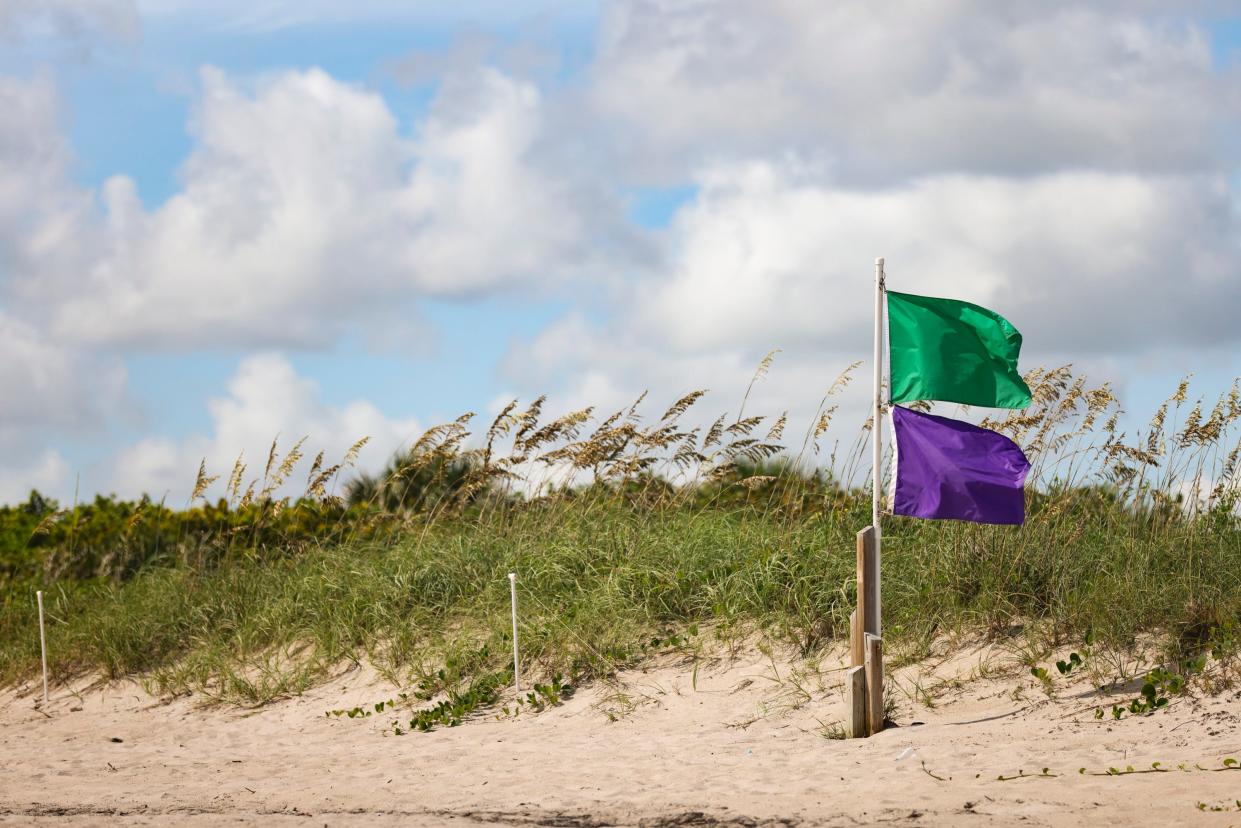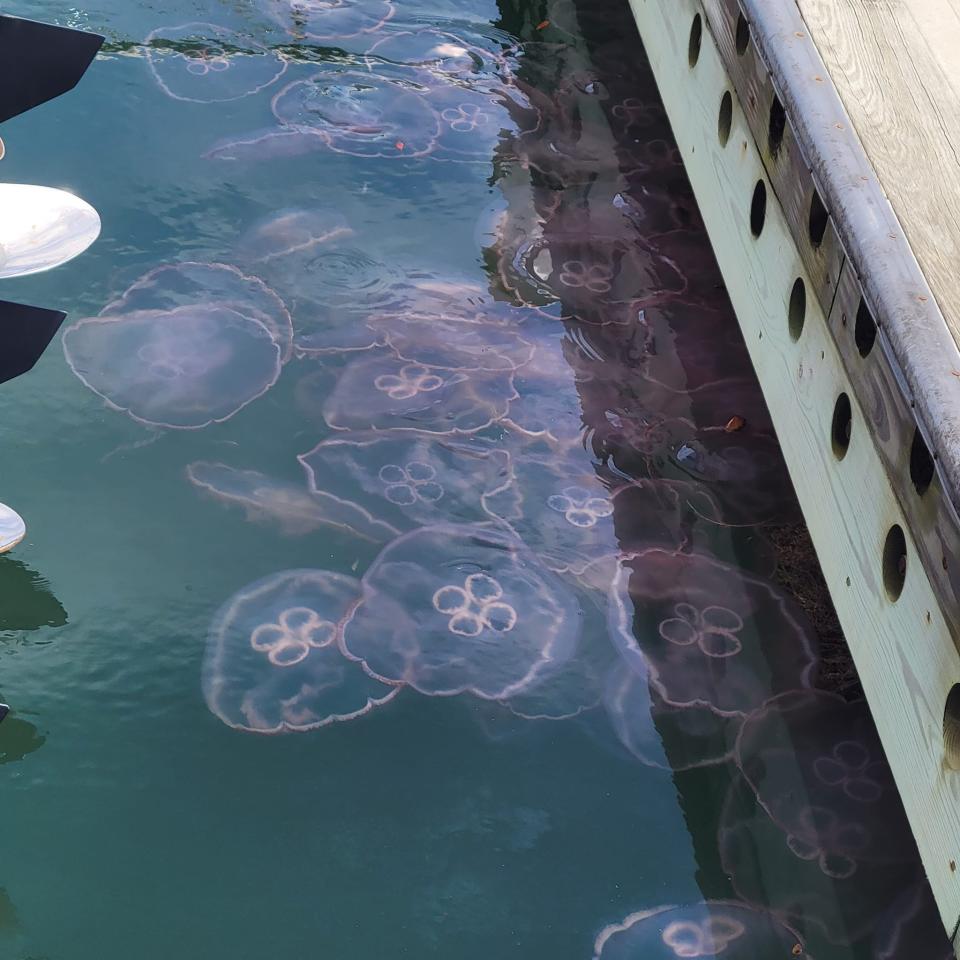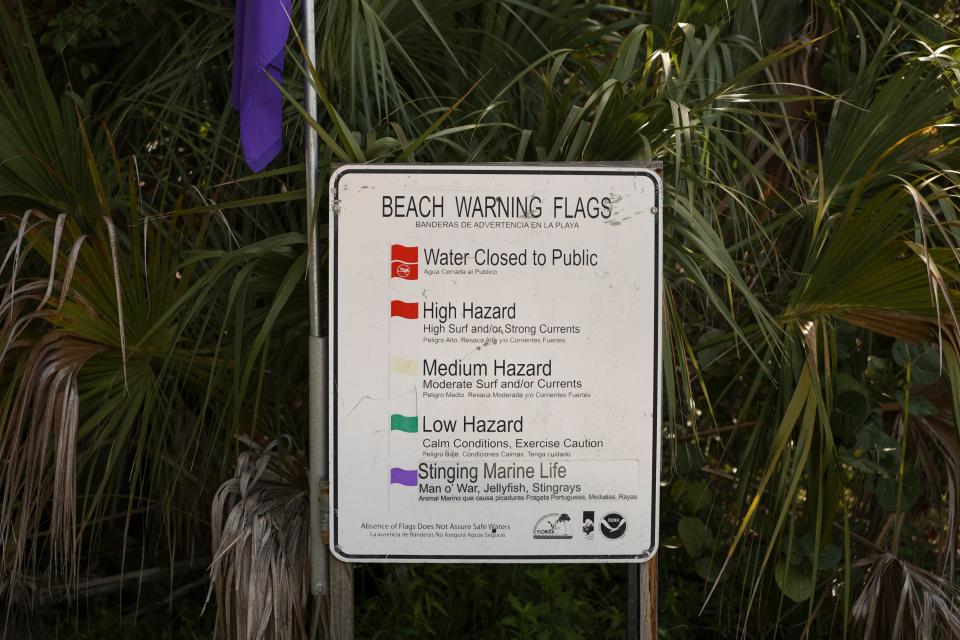Florida jellyfish invasion: How long will moon jellies keep surfers, swimmers from ocean?

Jellyfish are driving surfers and swimmers out of the water at the beach.
Moon jellies, which have small and spiny tentacles that rub against people and cause the sting, started to appear in the ocean at St. Lucie County beaches about four weeks ago, according to Ocean Rescue Chief Andrew Ritchie.
Reports have been spotty. The jellyfish mainly have been showing up near the Fort Pierce Inlet, affecting the beach at Fort Pierce Inlet State Park, a popular Florida surf spot nicknamed the North Jetty, according to Ritchie. A lot of jellyfish also have appeared at Pepper Park Beachside on North A1A and Blind Creek Beach on South A1A, but Ritchie said there haven’t been as many at the county's southernmost Waveland Beach.

About two weeks ago, a swarm of moon jellyfish showed up across Martin County beaches but disappeared within a week, said Martin County Ocean Rescue Capt. Derick Brown. That infestation could’ve moved north to St. Lucie County with winds and currents, he said.
Then, about a week ago, the jellyfish invasion made its way to Indian River County beaches, said Patrick Sullivan, president of the Vero Beach Lifeguard Association. He expected it would be at least a couple weeks before they cleared out of the water.
Moon jellyfish are seasonal, appearing at least once a year. In previous years, lifeguards have seen them hang around anywhere from three to five weeks, Ritchie said.
All jellyfish can be found in small numbers year-round in Florida, but their numbers increase in warmer months, according to Jim Masterson, a research professor in marine ecology at Florida Atlantic University’s Harbor Branch Oceanographic Institute at Fort Pierce.
They’re typically most abundant in September and October before disappearing as the water becomes colder. However, it takes warm-water temperatures coinciding with strong onshore winds and/or currents to push them inshore.
Their movement mostly is driven by ocean and wind current patterns, as well as food availability, according to Zack Jud, director of education at Florida Oceanographic Society in Stuart. An uptick in moon jellies often coincides with an increase of plankton, their favorite food source.

Still, even the most predictable patterns can change with water temperature, current upwellings and fossil fuel-induced climate change, according to Jud.
Most people experience only a mild reaction from moon jelly stings, but some are more sensitive than others and end up with red marks and swelling.
Moon jellies have hundreds of small tentacles that line the outer rim of its top, unlike the Portuguese man o’ war, which has long tentacles that can deliver extremely painful stings.
Moon jellies become a problem when they break into smaller pieces from rough swell. If stung and in pain, put calamine lotion or hydrocortisone cream on the sting.
Laurie K. Blandford is TCPalm's entertainment reporter and columnist dedicated to finding the best things to do on the Treasure Coast. Follow her on Twitter @TCPalmLaurie and Facebook @TCPalmLaurie. Email her at laurie.blandford@tcpalm.com. Sign up for her What To Do in 772 weekly newsletter at profile.tcpalm.com/newsletters/manage.
This article originally appeared on Treasure Coast Newspapers: Florida jellyfish stings keeping people out of ocean in St. Lucie

